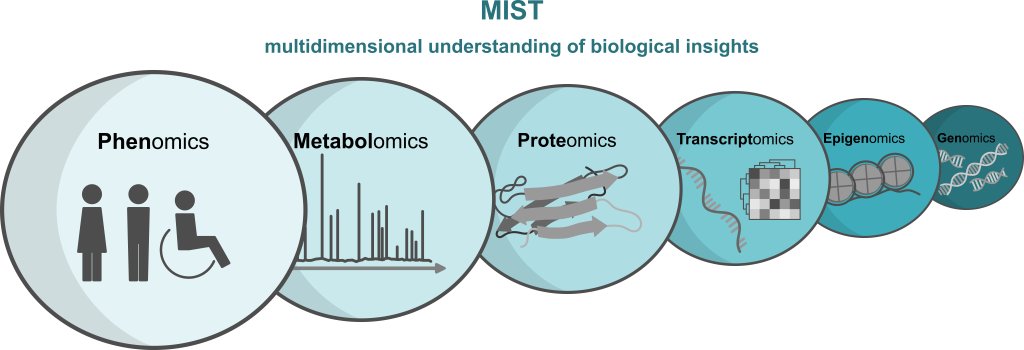Program Vision and Goals
The immune system is a highly complex and dynamic biological system that plays a vital role in health and disease and is regulated through a complex interactive network of many different immune cells and mediators. Getting a comprehensive understanding of the immune system is a challenging task. Key omics technologies and computational approaches are used for immunological studies to understand better how the immune system works in health and disease. With this new “The Multiverse of Immune system” program, we are stepping into the next generation of medical research.

MIST aims to 1) gather researchers from various institutions with enthusiastic goals to resolve the central paradox of multicellular biology with high-throughput technologies (e.g., genomics, transcriptomics, proteomics, metabolomics, bioinformatics) to understand the flow of information that underlies the causative changes that are behind complex phenotypes both “healthy” and “disease” and 2) to serve as an interconnected network for researchers joined by a mutual interest in a highly complex and dynamic immune system. The new “The Multiverse of Immune system” program will further strengthen the local research communities, such as the InFLAMES flagship program. Besides locally, the program also promotes collaboration with other national and international universities, research institutes, and companies, which is vital for high-profile international programs and funding.
Theme 1: Mechanisms of Immune cells regulatory networks
1.1 Understanding signaling events that determine cell fate outcomes in the immune system
1.2 Elucidating mechanisms of cell-to-cell communication networks, which are crucial for the orchestration of immune responses in space and in time
Theme 2: Immune-mediated diseases and immunotherapies
2.1 Discovering the driving mechanisms of the immune reaction underlying inflammatory and other immune-mediated disorders
2.2 Identification of biomarkers for diagnostics, early intervention, and prevention by a combination of experimental and computational approaches
Theme 3: Cell profiling and imaging of the immune system
3.1 Exploring how the different immunomics and imaging data modalities can be leveraged for acquiring detailed mechanistic information on immune physiology
3.2 Identifying molecular signatures associated with stemness, pluripotency, and differentiation. 3.3. Exploring whether multi-omics and imaging data at the single-cell level can pave the way for future advances in immunology research and clinical translation
Our action plans for the next five years include promoting
1) Cutting–edge international research through cross–disciplinary collaboration between basic,
clinical, and translational research groups using multidisciplinary approaches across cell biology,
omics and imaging technologies, computational sciences, and medicine
2) Renewal of science by bringing together new groups and young group leaders
3) Innovative exploitation and development of the high–end technology platforms
4) Excellence and networking opportunities in doctoral and postdoctoral training in collaboration
with the graduate schools.
5) Tech transfer and commercialization opportunities in collaboration with the research and
innovation services
